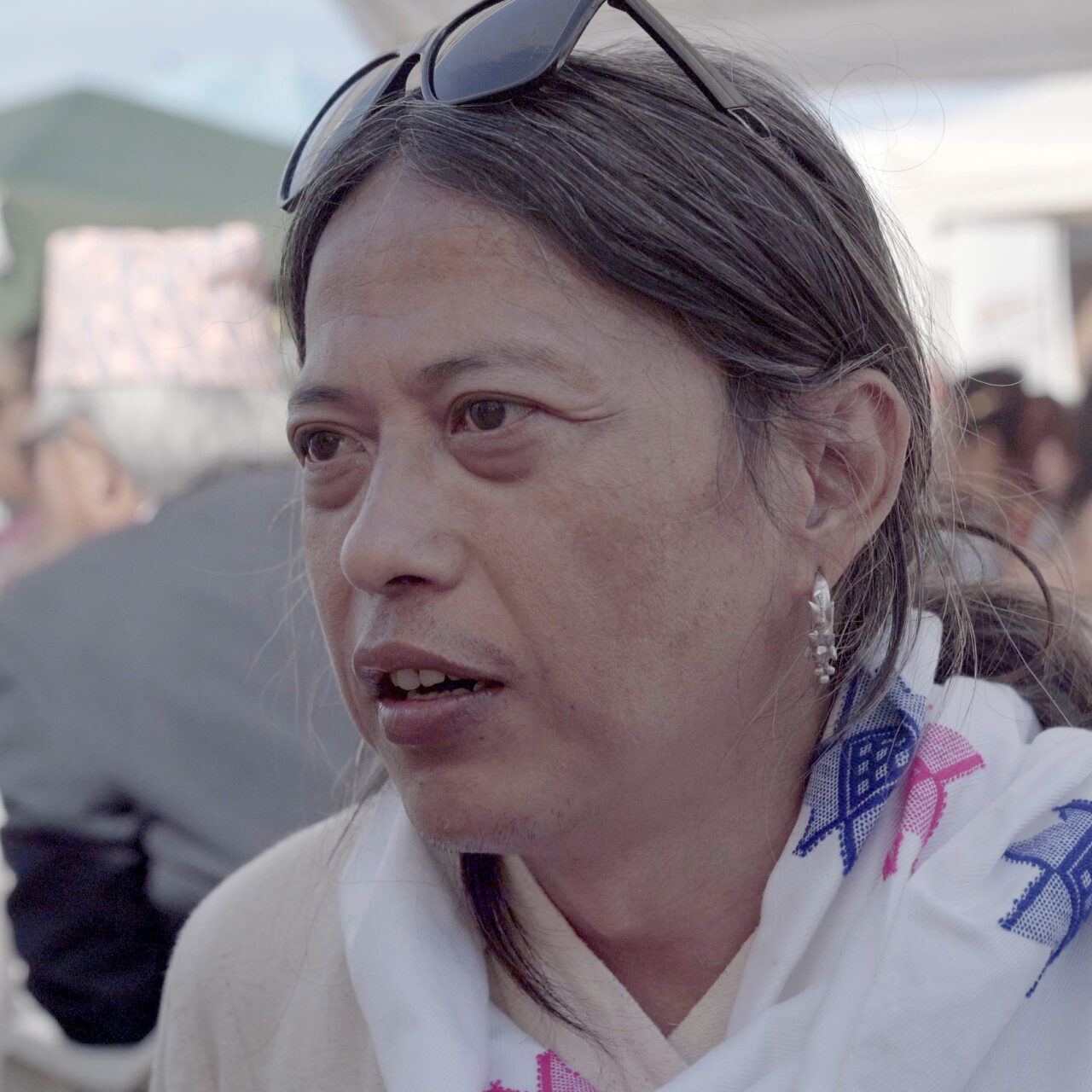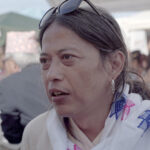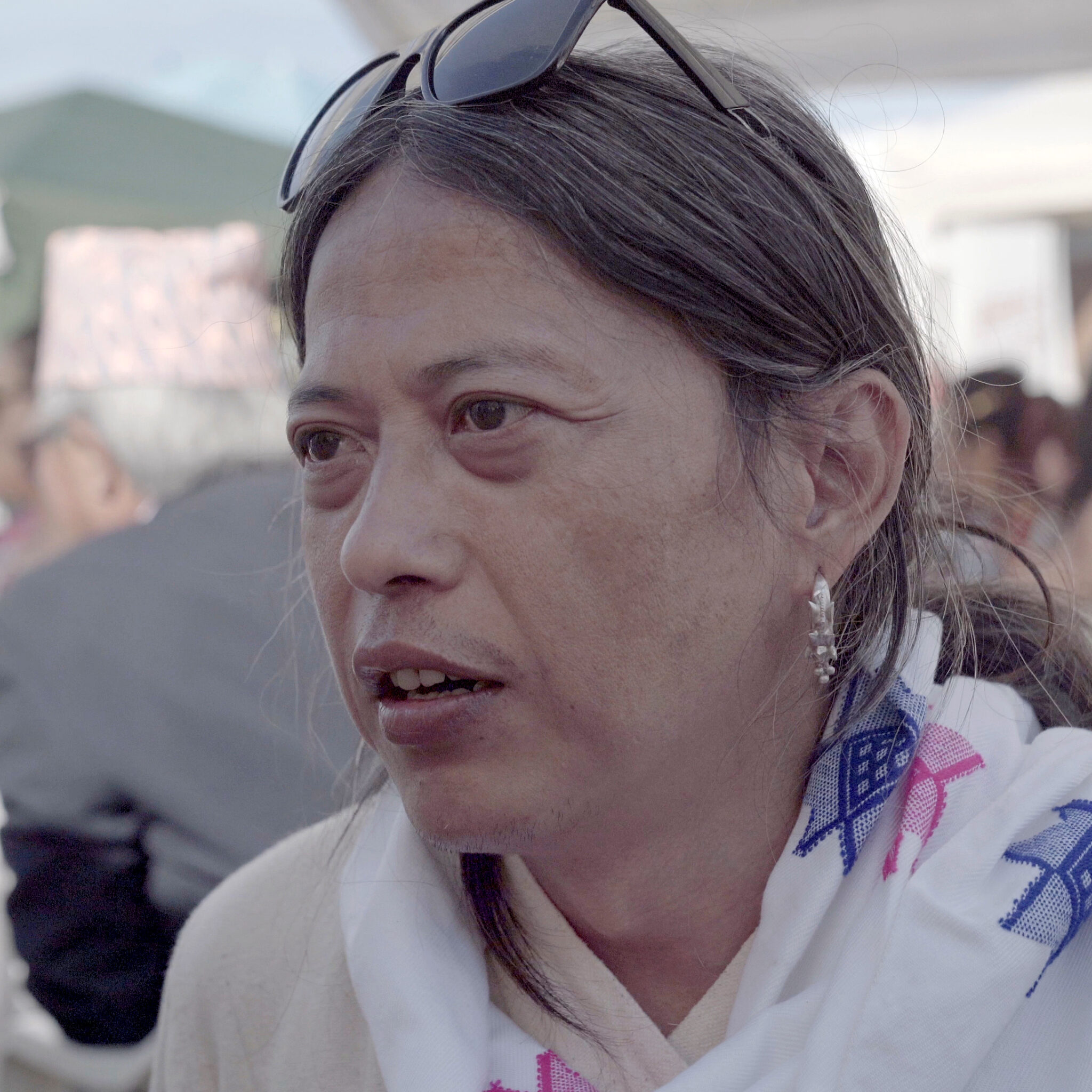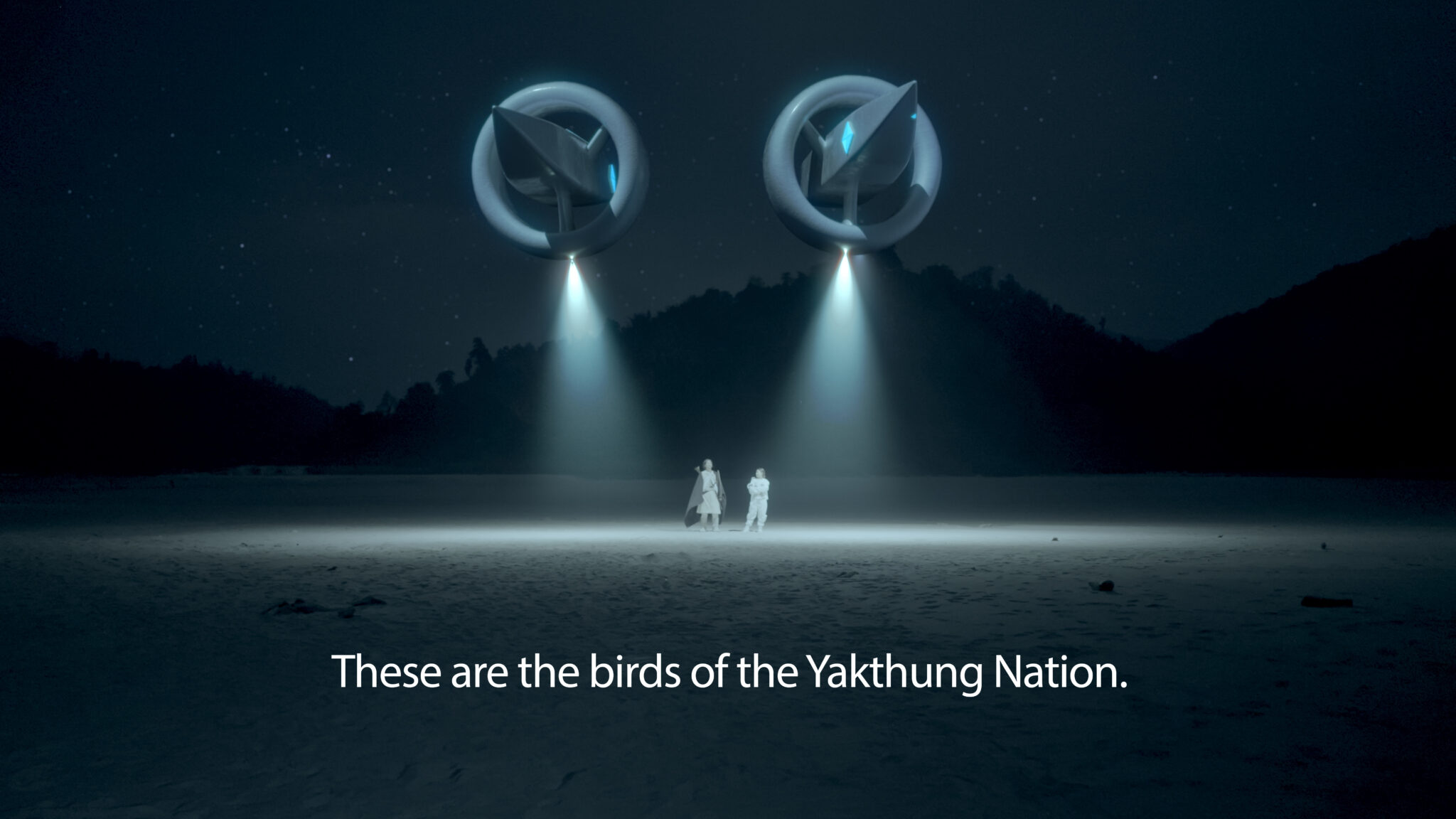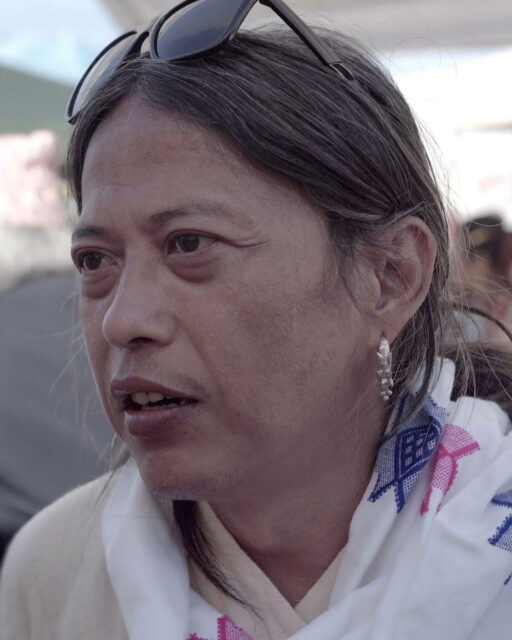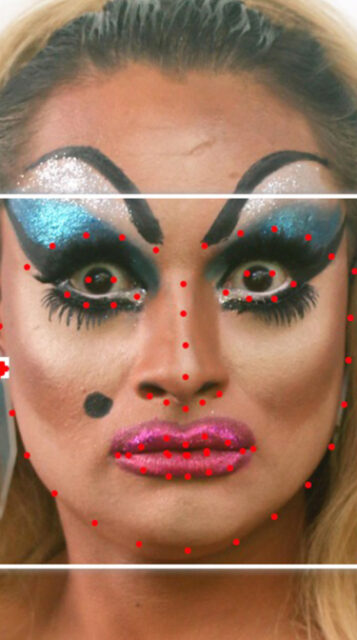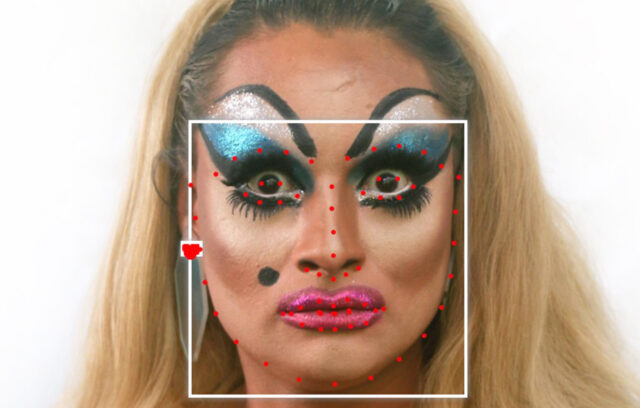You were the Grand Prix Recipient of the 5th VH Award. Can you tell me about the work that garnered you the award?
The title of my 2023 film Ladhamba Tayem; Future Continuous borrows from a verbal inflection that denotes an accident in time. The work, which is nearly fifteen minutes long, establishes two characters. One is from 1774 and features a real warrior named Kangsore, who resisted a colonial Gorkha army, which later became [the] Nepal army. The other character, Mikki, is a time traveler from a distant future where Indigenous people have time-traveling technologies, but still speak the native language, and have their stories, ceremonies, and culture intact. By putting these characters, one from the past and the other from a future where we have sovereignty, in dialogue, I wanted the viewer in between these timelines to get in conversation and ask: What could my role be here to reach the future that the time traveler embodies? I could have never realized this work without the help of my elders, collaborators, the Eyebeam residency for VH Award finalists, and of course the support from VH Award itself. Our elder Prof Amar Tumyahang was my main consultant and fellow Indigenous artist Mekh Limbu was an assistant consultant. I was fortunate to work with musician Jhuma Limbu for the chanting and Swapnil Smriti for the lyrics; I also collaborated with photography director Shanta Nepali, cameraperson Manish Maharjan, line producer Srijana Limbu, and actors Bimala Khajum Limbu, Aashish Aveng Limbu, and Ashali Wanem Limbu.
What was your focus during your time at Eyebeam?
There are fellows from all over, from Wallmapu to India to Colombia to Nepal to Turtle Island, and beyond, and we have had amazing talks about technology, democracy, language, storytelling, Indigenous sovereignty, and decolonization efforts. As there wasn’t an obligation to produce a specific project, I took my time and during the last few months within Eyebeam, and I came up with the project which I am realizing with the help of my community at the moment.
Was there a culminating project?
Among many themes explored in our Eyebeam fellowship, language, storytelling, and decolonization were some that I was interested in, so I thought: What could be better than actually working to revitalize our Indigenous language? I come from Yakthung (Limbu) Nation in what we currently know as Eastern Nepal, and many people who grow up in cities like me cannot speak their Indigenous language, and I’ve come across a number of people who wanted to learn. So, in collaboration with Yakthung Art Society, we are launching online classes where young Indigenous people (or anyone interested) can learn our language. Language is such a useful tool for decolonization, and these online classes could be an opportunity to connect with young people from the community and beyond who not only share the love of language but also the idea of just futures for all marginalized communities.
How has dialogue or collaboration with Eyebeam artists and alumni factored into your work?
We meet quite often, and the extensive dialogue between us has been a core part of this experience. I learned a lot from my fellow Eyebeam artists and mentors, and I’m grateful to be in the company of amazing people and to know their work.
How do you think about the role of the artist in society?
An artist is part of society. There’s room for all kinds of work, but we should be conscious of what is happening outside the studio. We all have specific sets of skills. If you know ways of storytelling that are particularly efficient or compelling, it makes sense to use that skill to mitigate situations that are detrimental to society or to amplify certain voices. In my case, I don’t feel that I’m giving voice to my people; I am speaking about a community that I am actually part of.
